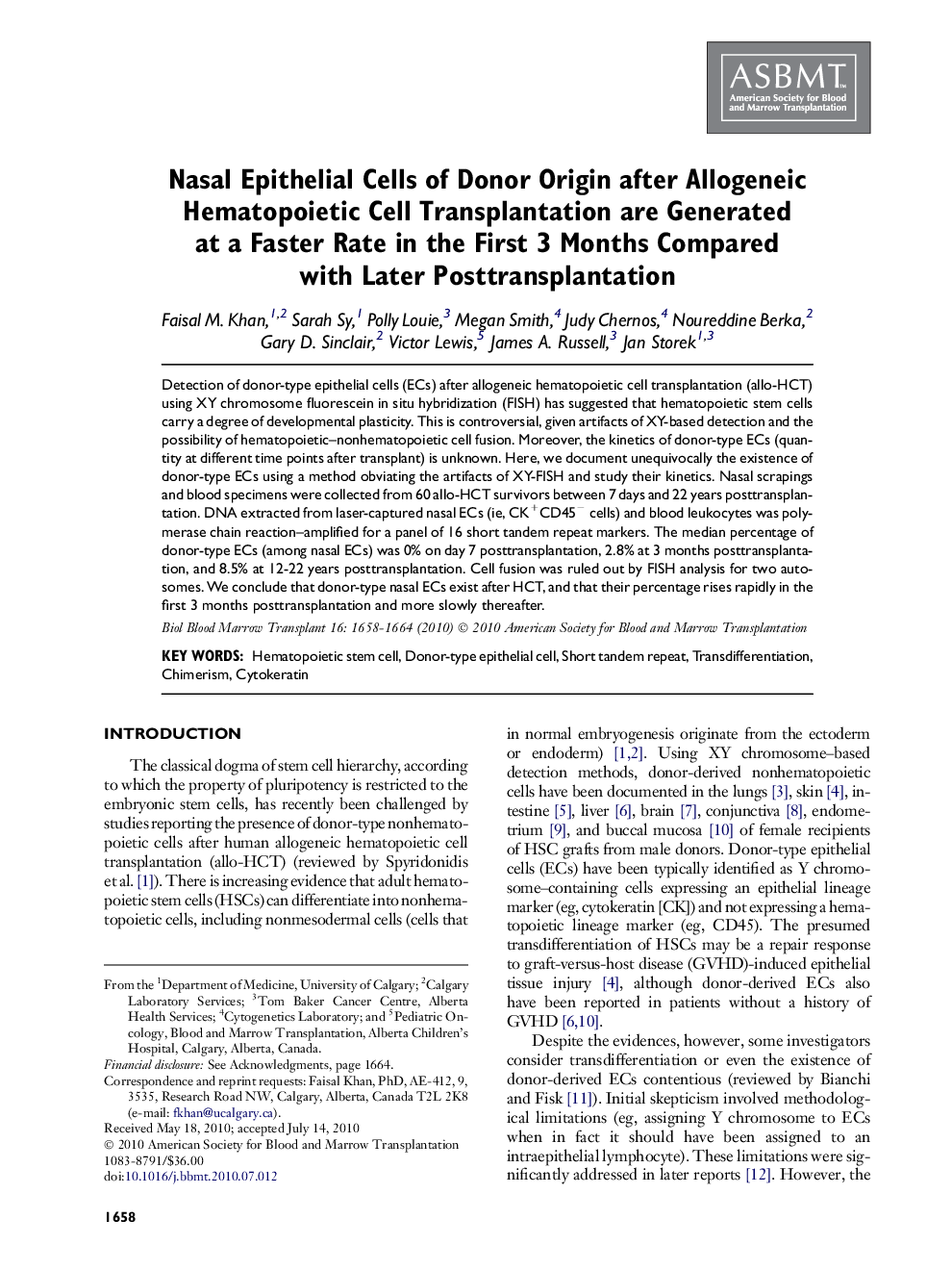| Article ID | Journal | Published Year | Pages | File Type |
|---|---|---|---|---|
| 2103655 | Biology of Blood and Marrow Transplantation | 2010 | 7 Pages |
Detection of donor-type epithelial cells (ECs) after allogeneic hematopoietic cell transplantation (allo-HCT) using XY chromosome fluorescein in situ hybridization (FISH) has suggested that hematopoietic stem cells carry a degree of developmental plasticity. This is controversial, given artifacts of XY-based detection and the possibility of hematopoietic–nonhematopoietic cell fusion. Moreover, the kinetics of donor-type ECs (quantity at different time points after transplant) is unknown. Here, we document unequivocally the existence of donor-type ECs using a method obviating the artifacts of XY-FISH and study their kinetics. Nasal scrapings and blood specimens were collected from 60 allo-HCT survivors between 7 days and 22 years posttransplantation. DNA extracted from laser-captured nasal ECs (ie, CK+CD45− cells) and blood leukocytes was polymerase chain reaction–amplified for a panel of 16 short tandem repeat markers. The median percentage of donor-type ECs (among nasal ECs) was 0% on day 7 posttransplantation, 2.8% at 3 months posttransplantation, and 8.5% at 12-22 years posttransplantation. Cell fusion was ruled out by FISH analysis for two autosomes. We conclude that donor-type nasal ECs exist after HCT, and that their percentage rises rapidly in the first 3 months posttransplantation and more slowly thereafter.
